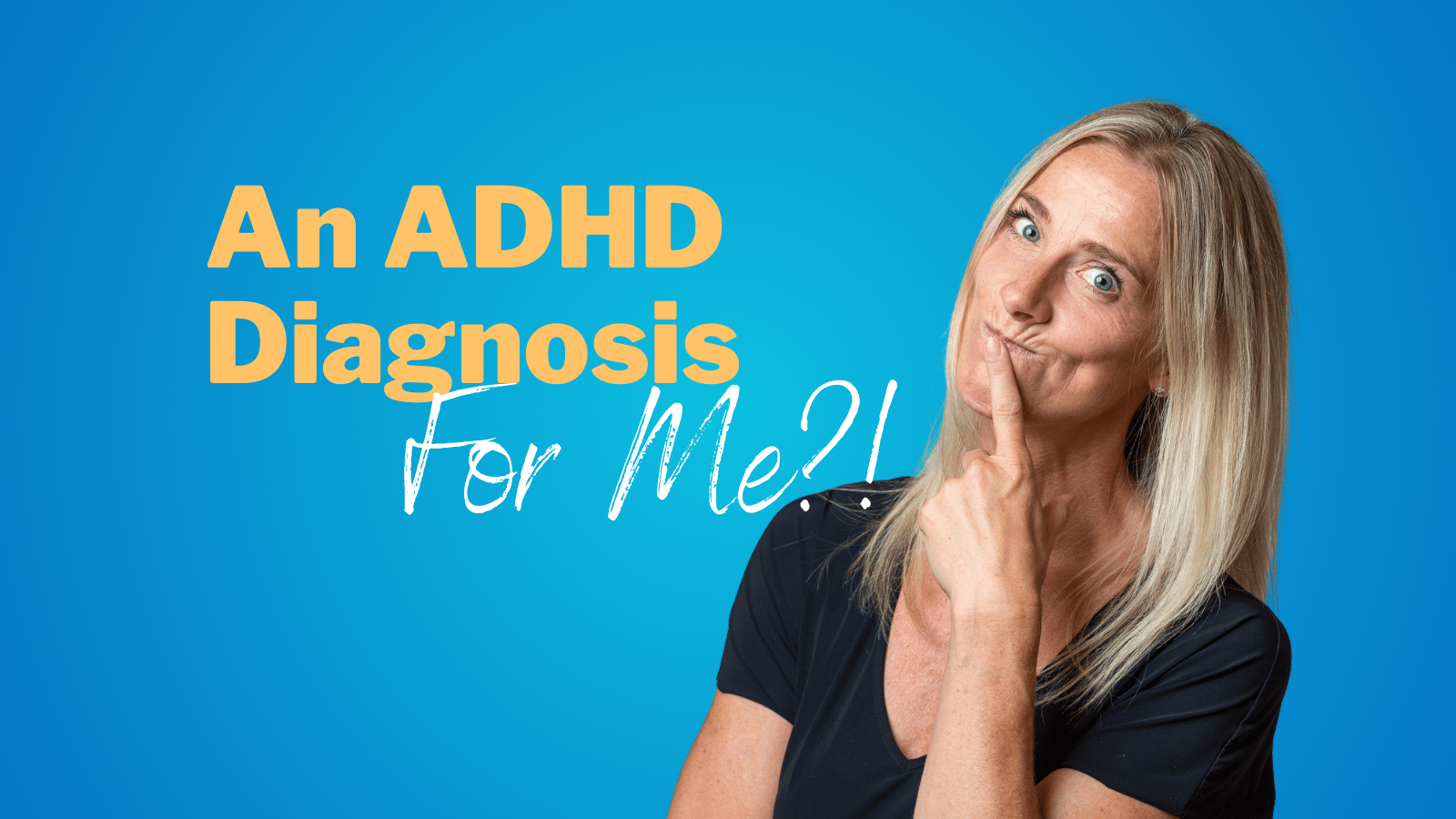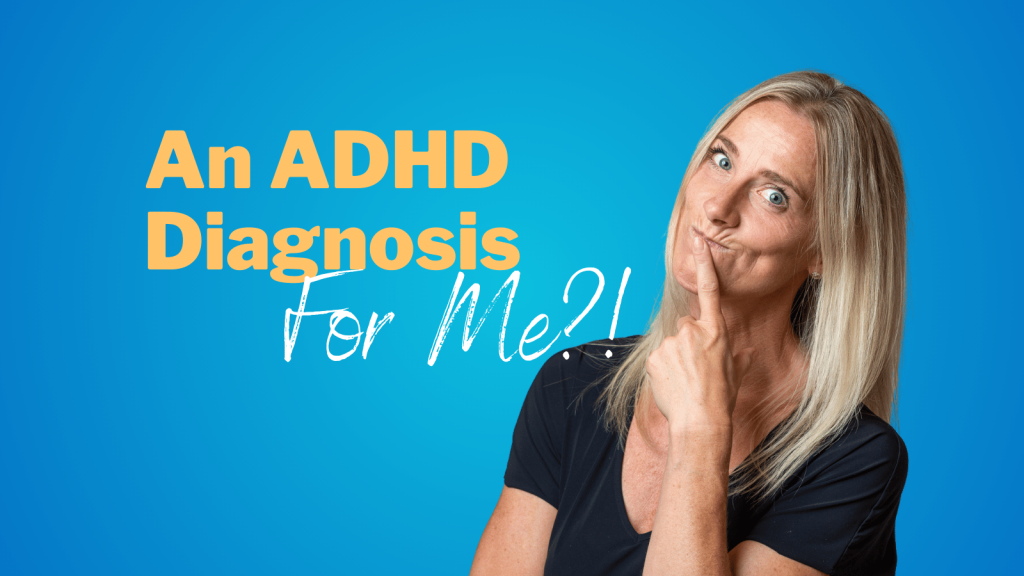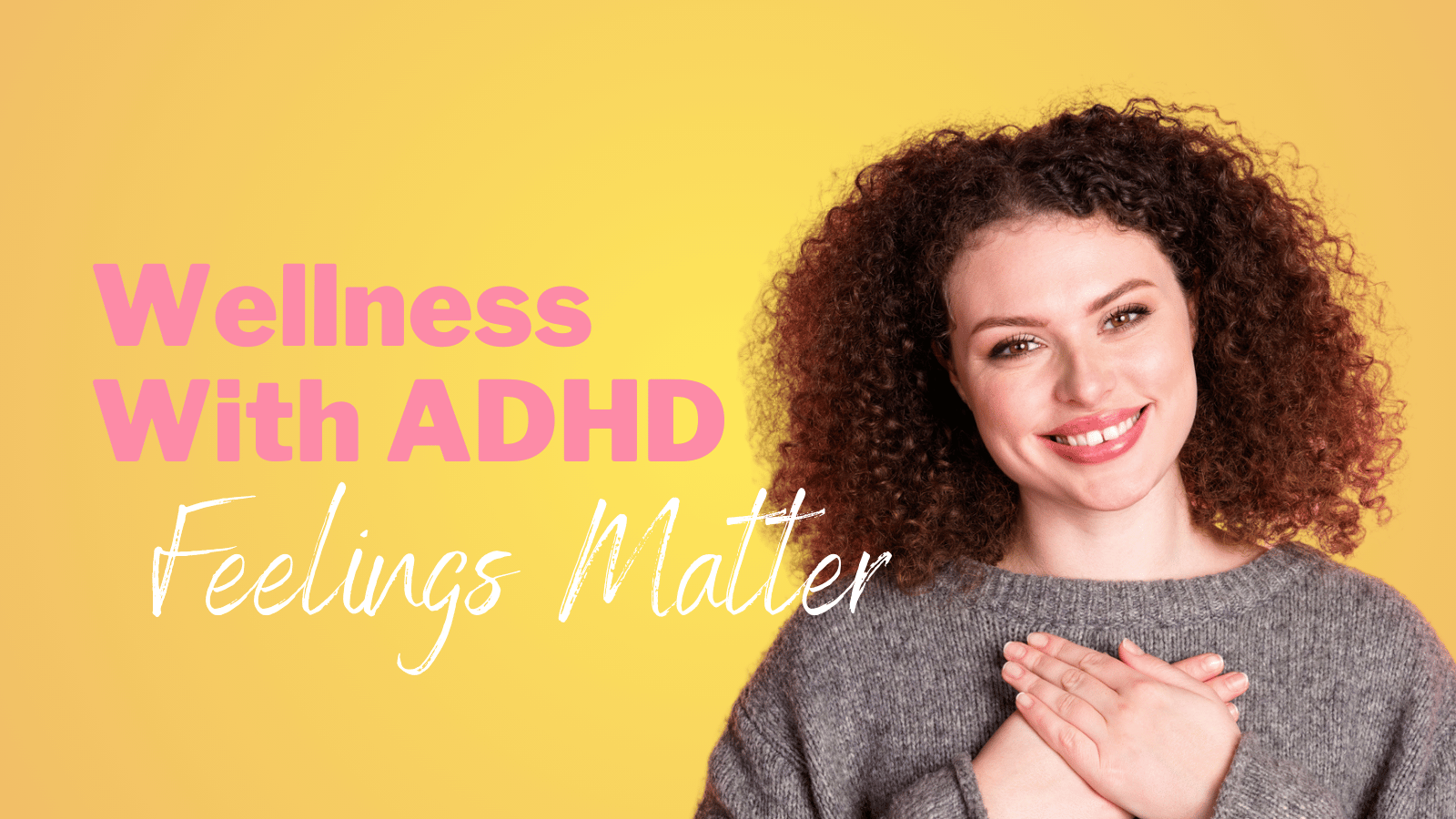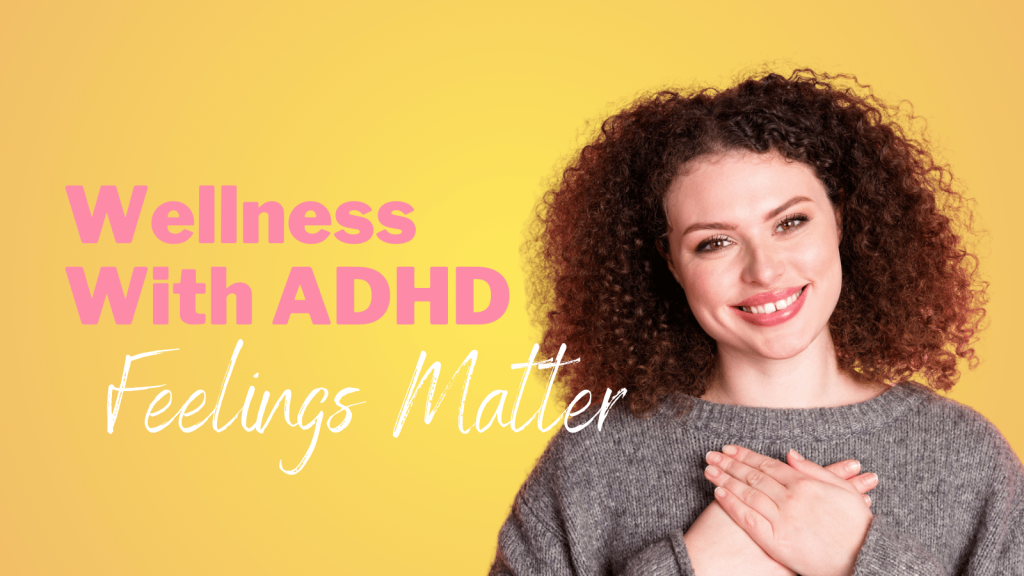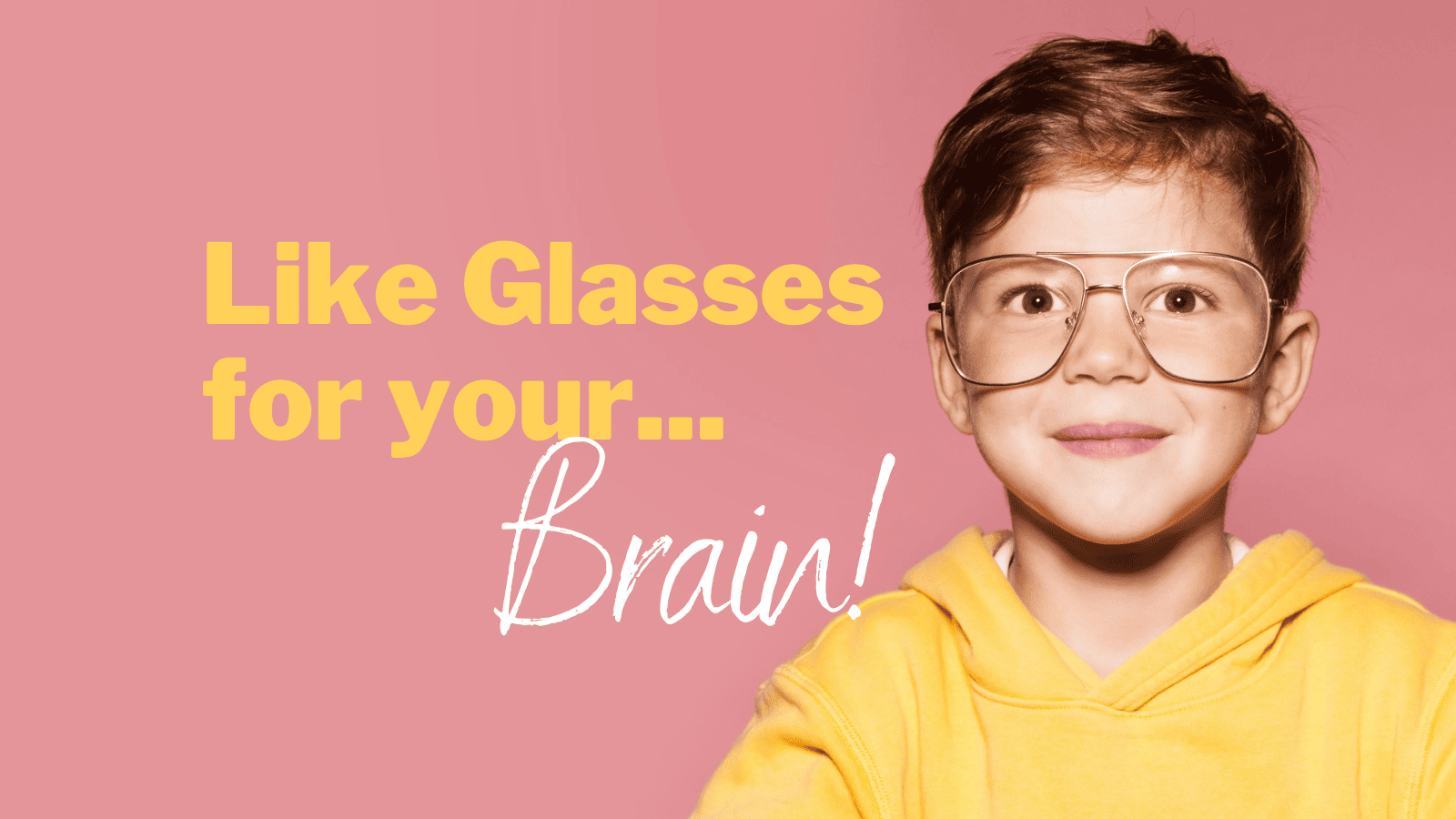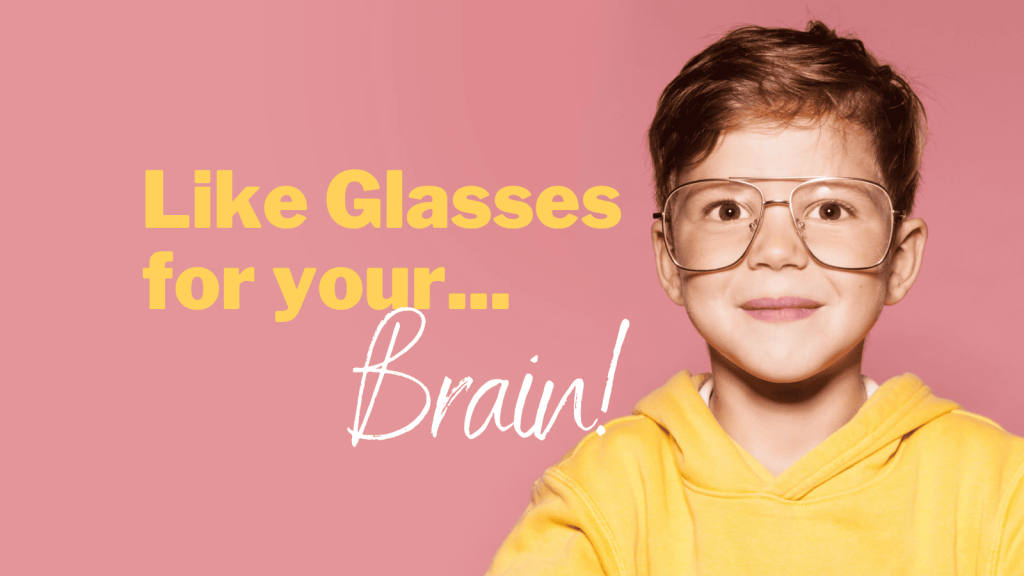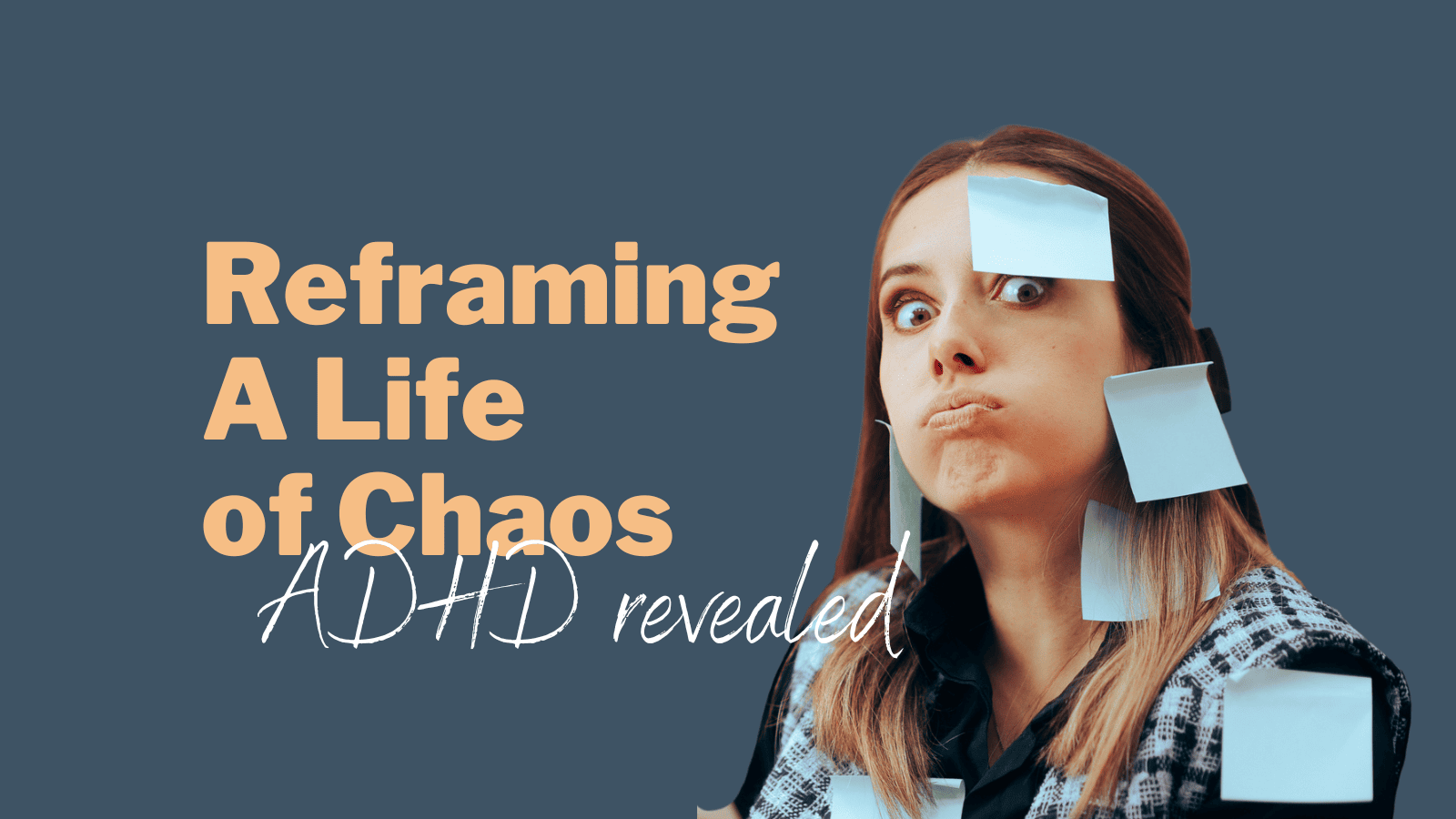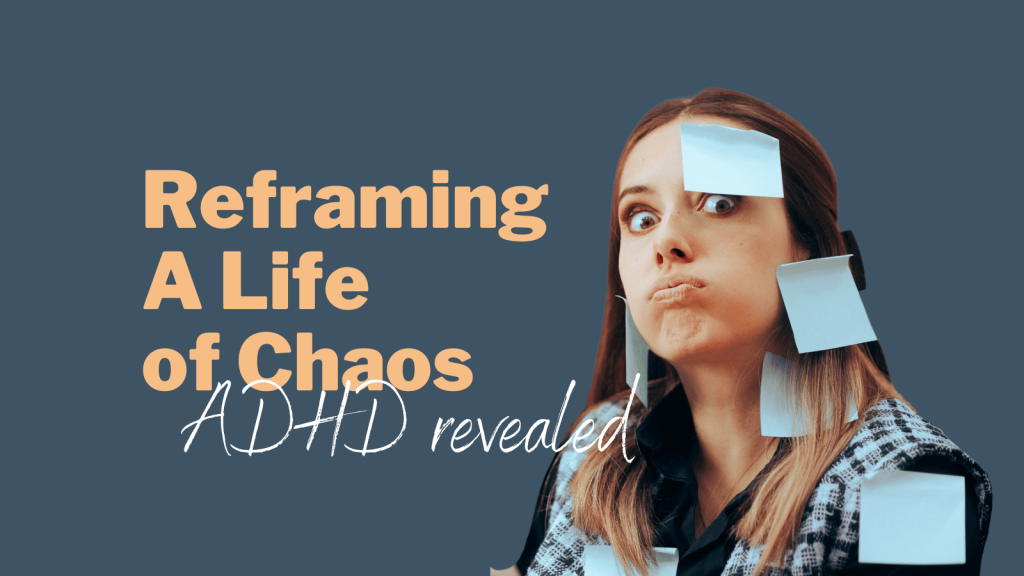Articles About LD & ADHD
“Miranda MUST be more mindful of completing her work”.
I must have read that comment a dozen times as I read and re-read the report cards that I pulled out of the envelope. My parents, now in their 70’s and in the midst of decluttering their house, had given me the report cards from my youth, dating back to my first year of school through to high school as they cleared out filing cabinets and boxes. And rather than a nostalgic look at years gone by, it had thrown me into an emotional spiral – which culminated in my late-ADHD diagnosis as a middle-aged woman, and several heavy bouts of therapy.
Assessment #1 – My Son
We are a family of neuro-divergents, some diagnosed (and I remain convinced some undiagnosed; not a clinical observation, moreso a judgemental one). Currently we have myself, my son and my grandson all with ADHD diagnoses living under one roof. It is at once chaotic, joyful and maddening.
I was a young single mother raising a son in the 90’s, and ADHD was, at least for boys, becoming a common diagnosis. When my son reached grade 5 it was clear that he needed help. His ADHD manifested in some of the most commonly understood ways – disruptions in class, fidgeting, lack of organization and impulsive behaviours. At that time in Alberta, family doctors were plentiful, there were resources available and luckily I had a supportive family who made sure that we were able to access the mental health supports we needed.
Quickly he was diagnosed using the criteria from the DSM IV, put on Ritalin, and then Concerta to rave reviews from his teachers. We would struggle later as he entered adolescence, and more as he stopped his medication as a teen and young adult. What strikes me now is how quickly teachers provided feedback, doctors were available, and the process was far simpler than what many parents face now.
Assessment #2 – My Grandson
Fast forward to 2023 and once again, I was going through the process of an ADHD assessment, but this time for my grandson who was in grade 2. As I slowly read through the assessment questionnaire, I began to see myself in many of the questions. Pair this with my entry into the magical world of menopause and all the hormonal upheavals that come with it, and you had a recipe for disaster. Or awakening. Or both! At work I was struggling with a heavy workload, and an inability to focus and complete tasks. Initially I was convinced that it was due to any number of factors – lack of sleep, menopausal brain fog, stress due to organizational changes. But as I checked off yes after yes on the ADHD questionnaire for my grandson, I began to wonder if it wasn’t something more.
As to why I hadn’t recognized any of this during the process of my son’s diagnosis and treatment – when you are in midst of the chaos with your attention singularly on your child, you simply aren’t paying attention to how those same characteristics also live in you. A grandchild however, provides a little distance so you can see both yourself and the child at once and recognize the similarities.
When my parents’ later ‘gifted’ me my old report cards, the dam burst and I felt a wave of emotions as I navigated my grandson’s assessment, my productivity lapses at work and my own memories as I read through the reports. I can read through the report cards more objectively now, but the first time I read through them I felt like I was flipping page after page of a young girl who was desperate for help, and simply not getting it. I was at turns angry, full of regret, and at times distraught. It is only recently that I can talk about this with others without feeling like I might cry.
Assessment #3 – Me?!
I turned to a mental health nurse through our medical clinic at work (I work at a post-secondary institution) and explained through tears that I thought I had ADHD and I was desperate to have it addressed. By this time, my stress levels had sky-rocketed as my procrastination at work had worsened, my direct supervisor was leaving due to the work environment and I was sure that if I didn’t find some kind of solution to my own productivity lapses, my job would be in jeopardy. I completed my own assessment and then came the difficult part of asking my parents to complete the parental assessment. Yes, now edging onto 54 I was having to ask my parents to assess me – my behaviours, my inclinations, those things which we had all just come to accept as my personality.
For any one who has been through an ADHD assessment recently, and especially as an fully-formed adult, the process brings with it doubt, self-judgement, and often, well-meaning but unhelpful comments from others. As a Gen-X woman who prided myself on my ability to tough out any illness or malady, I was struck with a type of medical-imposter syndrome and self-doubt.
“Had I simply watched too many TikTok videos where everyone was being diagnosed with ADHD?”
“Was this simply recency bias after completing my grandson’s ADHD diagnosis?”
“Was I simply looking for an excuse for a lack of productivity and laziness?”
“Was I REALLY that bad? I mean, I had been working successfully for years without a diagnosis.”
Not According To My Mother
The last point was one that I would hear repeated over and over again, especially as I tried to have conversations with my mother. As someone who I already had boundary issues with, an open conversation with my mother was difficult. From her point of view she didn’t want me to focus on the difficulties I may have had being undiagnosed, but to celebrate all that I had accomplished in spite of having ADHD. That outlook was her way of showing support.
What I needed from her, however, was an understanding that because of a lack of diagnosis, my life had been unnecessarily difficult. And that this wasn’t about blame (although at first I will admit it absolutely WAS about blame) but I needed to have my feelings validated. And HER need was that she needed to absolve herself of the guilt she felt about not recognizing my behaviour and difficulties for what they were. We were at an impasse.
Through many (many, many) therapy sessions I realized that I could control what I would and wouldn’t discuss with her. And that asking her to provide something she wasn’t ready to provide was an exercise in futility that kept me spinning in the same place. I had a choice – I could keep spinning and try to force her to provide me with the validation, or apology or recognition of the impact my lack of diagnosis had on me, or I could move on and continue my own journey of healing and self-acceptance. I decided to take the second path. Most days.
Next Steps
After my initial meeting with the mental health nurse I went back to my doctor to see about medication. Any discussions around medication are tricky. A myriad of lifestyle choices, genetics, and other medical issues combined with how knowledgeable your doctor is will influence the course of treatment. My doctor initially prescribed a non-stimulant medication that was being used to treat ADHD and she referred me to a clinic that specializes in ADHD assessments and treatments. But the wait list could be months. Or over a year. I felt dejected. I didn’t want to have to wait for a year to find a solution when I felt I was so close. Keeping in mind, at this point, I really didn’t know what a solution would look like.
When I called the clinic to inquire about my referral they confirmed it would be 6 to 12 months. “But”, they said, “there could be a cancellation.” That was my in. I put a reminder in my calendar to call every week. And diligently I did. Until frankly, I think they got tired of me calling and managed to get me in at the 2 ½ month mark. What this clinic provided was specialized and ongoing support through Group Therapy and weekly check-ins around medication. Through another more fulsome assessment I was put on a combination of stimulant and non-stimulant medication and began an 8 week group therapy program with others who were diagnosed with ADHD as adults.
This experience was invaluable, much of what was discussed was familiar to me, but having the experience of hearing first hand from others who were working, raising families, but struggling to find solutions to the very real problems of executive function and productivity was both enlightening and validating. We were able to share how our struggles impacted relationships, our work, our ability to enjoy our free-time and we were also able to share tips that we found helpful. All the while, we were under the guidance of an expert in this area who could explain the whys, and provide scientifically backed reasons for our behaviour, along with ways we could find solutions that worked.
Looking Back …With Empathy
I also used this time to reflect on how my ADHD had manifested in me outside of the annual report card comments. While from childhood to early adulthood I continued to display a concerning lack of time management, the more impactful behaviours were around impulse control. To this day I have to implement a structured financial monitoring system to keep my spending under control, as my go-to for a dopamine hit is filling up my Amazon (or any other online store) shopping basket.
COVID was a disaster. From purchasing squirrel huts for the squirrels in the front yard to an embarrassment of serums and skin-care products my every whim could be answered through online shopping. In my teen and young adult years, I struggled with low self-esteem coupled with a lack of impulse control around relationships. It was hardly surprising that I was a young single parent at 21. My romantic relationships were fleeting but passionate and mostly lacking in any real romance – and served again as a temporary answer to a long-term problem.
During those years, I struggled with food and drink over-consumption. In the 80’s and 90’s it was easy to drink your way through an evening with 2 for 1 specials and 50 cent drinks. It served both as a way to self-medicate my lack of self-esteem and confidence but also magnified my existing lack of impulse control. Even today, I am aware of when I’m using that glass of wine to self-soothe rather than simply enjoying a good glass of wine. When I’m hitting up the vending machine for candy every afternoon during a stressful week, I try to get back to tracking my food as a way of being more mindful about consumption.
Why So Late?
This post-diagnosis period for me was one of voracious reading, listening and looking up everything I could on late ADHD diagnosis in women. From articles to podcasts to online communities. It seemed to be a phenomenon born out of a lack of recognition of how ADHD might express itself in non-physical ways in young females. It was a generation of women entering perimenopause and menopause who were unapologetically focusing on themselves after years of service to their homes, spouses, and children. And what we were finding was both fascinating and rage-inducing.
In childhood, the ratio of boys to girls diagnosed with ADHD is about 3:1, whereas in adulthood that ratio is closer to 1:1, which suggests that females are simply not being diagnosed in childhood. In a survey of 1,500 women with diagnosed and undiagnosed ADHD, 94% responded that their symptoms worsened during perimenopause and menopause. And over half said that the greatest period of impact of symptoms on their lives was during their 40’s and 50’s. This explained why as I looked for a solution to hot flashes, my ADHD symptoms also became more evident, and also why my son and I struggled to find a medication balance during his adolescence when hormones are also wildly unstable.
As I consumed everything I could I was struck by a few things. First of all – the narratives related to ADHD diagnosis were a) The Poor Me narrative, where ADHD was the reason for everything challenging in life and the world just needs to adapt to this neurodivergence. OR b) ADHD is a Superpower, and never mind that we can’t keep our calendars straight, we are CREATIVE! And ENTHUSIASTIC!
There was little in the way of, “yes, this is a medical diagnosis, and yes, it presents certain challenges, but you CAN actually just get on with life (with a few adjustments).” In the age of social media, I suppose the algorithm only rewards extremes, but being able to recognize one’s self in the articles or stories in a way that feels authentic without being overly dramatic was proving difficult.
Today, 2 Years In
So now that I’m 2 years beyond my original journey to diagnosis, where do things stand?
I’m still employed – and continue to find ways to keep myself on task and engaged. I also recognize when I need a day to regroup after a particularly stressful period, and how to structure my tasks on a daily basis to maximize my productivity.
I am more attentive to sleep, to health and to making time for myself. While exercise is one of the habits that has the biggest positive impact on aDHD symptoms, I continue to be inconsistent with it. But I no longer think I have to do x amount of minutes every week and instead I use my Peloton app to try to fit in anything, whether it’s a 5 minute core workout, or a 30 minute spin class when I can. I also got a DOG! Which has had a remarkable impact on my physical and mental health – walking, and getting outdoors are both positive factors on the mind and body. Plus an evening of netflix is all the more enjoyable with a pup curled up in your lap snoozing.
I am medicated. Which has been life-changing for me. I no longer have to focus every molecule of energy on managing myself, my behaviour, and my mind. I think that was one of my most profound revelations, was just how much energy I had had to dedicate to trying to manage myself over the years, when it came naturally to neurotypical people. Some of my utmost moments of rage came when I thought about what else I could have accomplished if I could have redirected that energy to something else. But with that also came a high-level of personal awareness that has made me both more effective at home and at work, and frankly more empathetic (again, most days).
I’m trying to wean myself off social media, which had become a source of information, yes. But also a source of angst, and wasted time. I think my previous thoughts about the existing narratives around ADHD were a source of frustration for me, and much of how social media has been developed feeds into the least healthy traits around ADHD such as self-esteem issues, dopamine dysregulation, and time-management challenges. I have difficulties moderating some behaviours so for me, none is easier than a little. It remains to be seen how long my commitment will last.
In all, the journey continues, and as we navigate the assessment and treatment for my grandson I’m sure there will be many more hurdles and opportunities.
1 Miss. Diagnosis: A Systematic Review of ADHD in Adult Women. National Library of Medicine | https://pmc.ncbi.nlm.nih.gov/articles/PMC10173330/#:~:text=In%20childhood%2C%20the%20ratio%20of,et%20al.%2C%202020).
2 ADHD Impairment Peaks in Menopause, According to ADDitude Reader Survey. ADDitude | https://www.additudemag.com/menopause-symptoms-adhd-survey/#:~:text=For%20more%20than%20half%20of,and%20even%20fewer%20before%20then.
Burnout is a term used to describe being in a state of shutdown. Symptoms of burnout vary from person to person; however, they often include fatigue, emotional numbness, body pains, increased or decreased sleep, and apathy.
Burnout can be understood through the Spoon Theory, an analogy created by Christine Miserandino to explain variations in physical, emotional, and mental energy. Everyone has a set amount of spoons per day. Everything you do takes a spoon. Burnout occurs when you have no spoons left and you are trying to continue. The good news is that learning how to recover from burnout is possible. The same skills that help with recovery can also be used as preventive care practices.
How Do You Rethink Burnout?
For both recovery and prevention, the first step is rethinking mental wellbeing as separate from physical wellbeing. Instead of being separate, mental and physical wellbeing are intertwined. Therefore, it is important to explore both your feelings (physical bodily reactions) and your emotions (labeling or categorizing these feelings). As a neurodivergent individual, your experiences may have been invalidated in the past. Therefore, reflecting on your feelings and emotions as an adult may be a new experience.
Getting To Know Your Feelings
Understanding your feelings as physical reactions is tied to your perception of your body. Depending on your neurological wiring, you may be more, or less, aware of your own body. This awareness of your body is called interoception. Interoception includes awareness of the variety of internal sensations in the body, such as heart rates, hunger, temperature and pain. Interoceptive feelings include:
- I recognize that I’m hot before sweating or cold before shivering.
- I regularly can feel my heartbeat.
- I notice discomfort before I become stiff or sore.
A person with high interoception would be hypersensitive of their physical sensations and could be easily overstimulated by them. For example, wearing clothing with tags feels painful. In contrast, a person with low interoception would not be aware of physical sensations until they become more extreme such as not noticing thirst until becoming dehydrated or not using the bathroom until it is urgent.
How Are Emotions Different From Feelings?
Emotions are tied to labeling and thinking. Emotions involve interpretations and meaning making; therefore, emotions are a cognitive activity. Cognitive emotions are often constructed by past experiences as well as current values and beliefs. Cognitive emotion awareness includes:
- I can identify the emotion I am feeling at any given time.
- I differentiate between similar emotions, such as frustration and disappointment.
- I can explain why I have a particular emotion.
A person with high cognitive emotional awareness might have intense emotional states, and may have multiple, complex and conflicting emotions at the same time. They may spend a lot of time thinking about their emotions, which can be overwhelming.
A person with low cognitive emotional awareness might struggle to explain or label their emotional state. They may have difficulty understanding causes of their emotions or impacts emotions have on them. For example, someone believing that nothing ever seems to bother them.
Mapping how you experience Interoceptive Feelings (IF) and Cognitive Emotions (CE) allows you to better identify the circumstances that impact your wellbeing.

A neuroinclusive, embodied approach to wellbeing means learning how to recognize your individual signs of distress and learning the skills to recover. In other words, you need an approach that helps you to identify when you are running low on spoons.
Helpful Tips
Here are few helpful tips to start you on this journey:
If you have Low Interoceptive Feelings: Body sensations may not be felt until they are overwhelming. As a result, you may not get physical warning signs of running out of spoons. In particular, individuals in hyperfocus or flow state are particularly prone to this challenge. External reminders for breaks or check-in can be a helpful tool. You may also have to proactively check-in with your body to help maintain your wellness during your flow states.
If you have High Interoceptive Feelings: With constant bodily feedback, high interoception individuals are likely to experience overstimulation that can result in burnout. You may find that reducing sensory input can help protect your spoons. For example, reducing stimulus in your environment or adjusting lighting may help save spoons for more critical tasks. Moreover, you may experience burnout first as physical feedback. You will likely find embodied activities, such as mindfulness, helpful when dealing with stress.
If you have Low Cognitive Emotions: You may have difficulty thinking about or labeling your emotions. Consider looking for physical cues that are commonly associated with emotions. For example, rapid heartbeat is often experienced with anxiety. You may want to try non-cognitive or non-verbal approaches to exploring feelings. For example, you might find art, music, and other ways of expression better reflect your understanding.
If you have High Cognitive Emotions: Since you can easily label and verbalize emotion, you might find you get overwhelmed in thoughts or talking about feelings. There are a multitude of ideas and meanings going on at once. You may find using structures for organizing and categorizing help make sense of your experiences. An example of this is using bullet journals. Similarly, verbal or cognitive strategies like reframing may help support your wellness.
Rebuilding Your Wellness
By recognizing the interconnection of the body and mind, you can better understand how to support your own wellness. Engaging in sensory explorative behaviours as children may have been discouraged or even punished by family, community, or school educators. Because of this, many neurodivergent people were taught to ignore or dismiss these experiences as children, leading to internalized stigma or shame as adults.
As an adult, you can build renewed awareness of your experience of feelings and emotions. Understanding your body/mind connections means learning how to recognize and recover from distress that uses up your spoons. You can help prevent burnout, support your wellbeing, and reach your goals by practicing ways to save your spoons for what is important to you.
About the Authors: Brenda McDermott is the Senior Manager of Student Accessibility Services at the University of Calgary. She completed her PhD in Communication Studies in 2015. As a lifelong learner, she returned to school to complete a Masters of Education in 2021. She has a passion for improving the student experience, exploring Generative AI tools, and discussing Universal Design for Learning.
Jess Lopez (they/them), is proudly neurodivergent and epupillan (Mapuche 2Spirit). Jess runs the Neurodiversity Support Office at Student Accessibility Services, University of Calgary, and pursues MEd graduate studies in Educational Research. Jess provides innovative, neuro-affirming, embodied approaches to wellbeing for students and educational training for staff and faculty to help foster a neuroinclusive campus community that values different ways of knowing and being.
If you look up the title above, you will be directed to resources for individuals with ADHD to advocate for themselves, make themselves better understood or make it easier for others to work with them. There are little to no resources out there for employers or organizations to better communicate with neurodivergent folks in order to make their workplaces more accessible.
I’ve had several conversations with adults who were diagnosed late in life with ADHD, and the common thread in these conversations is a sense that we can do better to make our collective communication more digestible. Two of the adults I consulted, who were diagnosed with Severe ADHD in their forties, gave me some actionable tips for written and verbal communication with neurodivergent individuals.
The ideas they conveyed were very similar, and they align with what research I actually could find. Using some of these tips will help neurodivergent and others digest information more readily.
Written Communication
Written communication should be concise. Long, languid texts are hard to follow, and folks can lose interest or focus on the topic, often because their working memory is overtaxed. Some ways to make text more accessible are:
- Emails or messages can be about just one topic
- Spacing, bolding keywords and colour coding information is helpful
- Bullet points and lists make details easier to consume
- Send just one version of an email or communication so as not to confuse people
- Try not to send blanket messages that may not apply to everyone
- Avoid large blocks of text and opt for smaller chunks
- Be direct in what you are communicating; subtlety may be lost
- Step by step lists or instructions, using numbers and clear instructions will be easier to digest than paragraphs
Verbal Communication
Verbal communication often requires a great deal of nuance. To ensure you are being understood and to make it easier for folks with ADHD, you can add some of the following tips to your toolbox.
- Be patient – make space of potential interruptions and digression
- Be clear in your meaning and what you are requesting
- Make space for follow up questions and clarifications
- List tasks or requests in a sequential order
- Try to understand the person’s communication style and adapt as you can
- Follow up with written communication if making a request or relaying important information so it can be referred back to later
- If someone discloses that they have ADHD, take note so they don’t have to remind you
- Make eye contact and be mindful of your body language
- Be prepared to monitor digressions and prompt people to return to the topic
These are just some ways that people can make communication more readily digestible for folks with ADHD and even other types of neurodivergence. Remember that reducing barriers wherever possible is good for all types of people, and it will make your workplace or organization a better place to work and get things done.
About the Author: Dara MacKay is a Calgary educational professional who has worked extensively in the post-secondary education sector and has been in education for over 20 years in many capacities. Dara is passionate about serving populations who experience barriers, working to reduce them and connect students with strategies and resources that help lead to success. Dara is a member of the Learning Disabilities & ADHD Network’s Supports for Adults Team.
If you are a parent of a child who has been recently diagnosed with ADHD or a learning disability, you have likely asked yourself, “How should I tell my child?”
The first step in talking to your child about their diagnosis is to speak with the professional who provided the assessment and ask them how they would explain it. As a psychologist, I try to keep explanations of learning disabilities and ADHD age-appropriate and strengths-based, and allow families to ask questions.
“We’ve learned that your brain is built differently and that’s ok. It makes some things easier and others more difficult, and now that we know, we can work with that.”
For all ages, it will be important to help the child understand what their strengths and challenges are and how to ask for help when needed. Having a diagnosis is an explanation for why certain things may be easier or more difficult for your child compared to their peers. It will also be important to strike a balance between providing support and supervision to your child when it is required and giving them a manageable level of independence to improve self-esteem and confidence as they mature.
How Do I Explain A Diagnosis?
An important part of explaining a diagnosis to a child (or to anyone for that matter) is to distinguish between the challenges that arise from the diagnosis and the child’s character. For example, ADHD has been well established as a medical condition that involves differences in brain functioning, particularly in the frontal lobe and cerebellum, and with the neurotransmitter dopamine.
It is important to explain to your child that ADHD does not mean that they are lazy or stupid or that they don’t care about doing well in school (or at home or with their friends), but rather, it is an actual difference in how their brain operates, which makes it hard for them to direct their attention to the right task, at the right time, with the right amount of energy.
Using a Simple Example: Wearing Glasses
We understand this difference between condition and character when we talk about other diagnoses. For example, most of us would not tell a person who is nearsighted to simply try harder to improve their vision. There is an actual difference with how their eyes work compared to someone with 20/20 vision and no amount of trying harder to see better is going to improve that. Instead, we recognize the difference and we provide the person with glasses or contact lenses so that they can see just as well as someone who isn’t nearsighted. Similarly for ADHD and learning disabilities, we can explain to children that we know they are trying their best and now that we also know their diagnosis, we can support them with additional targeted instruction, accommodations, and other supports at home, school, and in the community.
How Do I Actually Word This?
How you explain a diagnosis to your child will depend on many factors, such as their age, social-emotional maturity, and how the diagnosis specifically impacts their daily life. For younger children, it will still be important to explain the diagnosis to them but in terms that they can understand and that don’t overwhelm them. For teenagers, parents may also want to focus on having important discussions about relationships, safety (e.g., driving), and self-advocacy.
Explaining Brains by Dr. Liz Angoff offers scripts and other tools that parents can use. This page is specifically about explaining a diagnosis to a child.
Getting Rid of “Try Harder”
When we separate the child’s character from their ADHD or learning disability then we remove the shame and sense of defeat that often comes as a result from frequently being told to “try harder.” When we describe the diagnosis in a clear and fact-based manner, we separate the child from the condition and allow them to accept it and not to over-identify with it. Your child is much more than their ADHD or learning disability but their diagnosis is also a part of their lived experience that needs to be recognized, accepted, and supported.
About the author: Krista Forand, M.Ed., Registered Psychologist, of Compass Psychology, practices in Calgary and is a member of the Learning Disabilities & ADHD Network’s Supports for Adults Action Team. “Krista’s training and experience have primarily focused on working with youth and adults who, due to challenges with learning, attention, and social skills, have had difficulty achieving their potential. As a psychologist, she provides thoughtful and comprehensive psychoeducational assessments including learning assessments. This helps clients understand how they learn, process information and how they can help themselves achieve their goals.”
My ADHD Journey Through Chaos, Diagnosis and Imposter Syndrome
I was 30 when I received my ADHD diagnosis: Combined Type, Severity: High. For most of my life, I’d been battling an unseen adversary – like an elusive cryptid – leaving me perpetually exhausted, scattered, and questioning my worth. Receiving the diagnosis was both a relief and an awakening. It validated my struggles while forcing me to confront not only the challenges but also the deeply rooted imposter syndrome that had quietly shaped much of my identity.
My diagnosis also brought into focus a more painful reality: how ADHD fueled impulsivity, poor decision-making, and unhealthy relationship patterns. Perhaps most difficult to acknowledge was how being the eldest daughter – the default “third parent” to my younger sister – trapped me in a caregiving cycle I was never equipped to manage, especially with a mind constantly whirling in overdrive.
The Toll of “Trying Harder”
Growing up in a lower-income household, mental health conversations were virtually nonexistent. We valued hard work, survival, and resilience. My parents, stretched thin by work and bills, were focused on keeping the heat on rather than on introspection. We didn’t have labels like ADHD; instead, there was “just try harder” or “just pay more attention.” As the eldest daughter, I became a second caregiver by necessity, readily stepping into a role long before I understood its weight.
From an early age, I took care of my sister: cooking meals, helping with homework, and often shielding her from household tensions. At the time, caregiving felt natural, but in retrospect, it set a precedent that followed me into adulthood. Managing these responsibilities with undiagnosed ADHD drained me. I was disorganized, forgetful, and constantly overwhelmed. Every misplaced item or forgotten task reinforced a belief that I was fundamentally unreliable—not just as a sibling or daughter, but as a person. Still, I pushed through blinking back tears of frustration and self-loathing because failure wasn’t an option. My family depended on me to keep things going.
This responsibility became central to my identity. I coped by overcompensating through people-pleasing, masking my struggles, and pretending I had it all together. On the inside I felt like I was held together precariously with strips of duct tape, cartoonishly slapping them onto leaks only for another to burst through the walls.
Same at School
In school, I was the quintessential underachiever. I lived in a constant state of overload, frequently losing homework, missing first periods but managing to panic-write A+ essays the night before they were due. My clothes were always wrinkled from their strategic floor piles, my hair constantly one day past its best-before date. My shifts at my after-school job always started five minutes late for reasons I still can’t account for. No one – not even me – saw anything past laziness.
College magnified my imposter syndrome. As the first in my family to pursue and complete post-secondary education (not to mention only half of us had finished high school), I felt the crushing weight of expectation. I juggled a full-time job, a viciously abusive relationship, demanding classes, and the gnawing fear that I was only moments away from being exposed as a fraud. Every assignment submitted late felt like the one that would expose my acceptance as a mistake.
I compensated with an arsenal of alarms, sticky notes in odd places, and sheer willpower. So much so that I have not one but two anxiety disorders that I box breathe through regularly (a little-known side-effect of untreated ADHD). Through clenched jaws and gritted teeth, I was convinced that everyone else was better than me. They were smarter, more capable. Things just seemed…easier for them. It was as if we all had the same recipe, but my copy was missing a vital ingredient.
Who Could Ever Love Me?
Impulsivity shaped my adult life, especially in relationships. My emotions felt intense and consuming. I often fell hard and fast, craving connection and validation. Without school to provide structure, I threw myself into work, desperate to prove my worth while seeming “normal.”
Looking back, it’s clear how ADHD left me vulnerable to toxic relationships. My rejection sensitivity led me to tolerate mistreatment out of fear of being seen as inherently flawed. Familiar dynamics of emotional chaos mirrored my upbringing and felt strangely comforting, even when they crossed into abuse.
Partners who belittled me or weaponized my disorganization confirmed my deepest insecurities: that I was broken, unlovable, or, as one cruelly put it, “a Kmart Blue Light Special.” I convinced myself that working harder could make me worthy of love. Leaving toxic situations felt like personal failure, reinforcing the belief that I couldn’t manage even the simplest human experience.
A New Direction
My turning point came when a close friend shared her ADHD diagnosis. Her experiences – endless to-do lists, forgotten appointments, impulsive decisions – felt hauntingly familiar. Still, seeking help felt selfish and dramatic. I was supposed to be the responsible one.
By 29, burnout consumed me after years in a high-pressure career. Convinced my searing shame stemmed from laziness or lack of discipline, I finally sought help. The therapist patiently listened as I recounted a lifetime of chaos, perfectionism, and caregiving. Her eyebrows barely raised when I confessed that, after an intense 24-hour research spree, I impulsively dropped $250 on everything needed to own a guinea pig – only to discover, upon holding one for the first time, that I do not like guinea pigs. When she confirmed the diagnosis (suspiciously not long after the guinea pig story), I cried with relief.
Revelation
The diagnosis reframed my entire life. I wasn’t lazy or defective – my brain simply worked differently. Yet, the relief was tempered by grief: for lost opportunities, for years spent drowning under impossible expectations, and for potential I never believed I had.
With support, I began untangling these narratives. I learned that being supportive doesn’t mean sacrificing my well-being. I no longer equate rest with failure, and I push back against imposter syndrome, recognizing it as a voice from my past – not my present – though it still whispers that my ADHD diagnosis is an excuse. Therapy helped me recognize that voice for what it is: a lifetime of feeling inadequate despite managing far more than most people could handle.
Better Today
Today, I’m still learning. Imposter syndrome persists but has quieted. I rely on supportive tools like reminders, medication, and unconventional laundry organization systems. While things still slip through the cracks, I’ve accepted that this doesn’t diminish my worth.
Being diagnosed with ADHD didn’t fix me – but it allowed me to rewrite my story with compassion. I’m no longer defined by perfectionism or shame. Instead, I see myself with the kindness I once reserved only for others. After all, being human isn’t about never falling – it’s about learning to get back up.
About the Author: C Motz is a Calgarian sharing her personal journey of ADHD in support of others like her.
Managing your money can feel overwhelming, especially if you add the challenge of ADHD or a learning disability (LD.) With the right strategies and tools, you can create a budget and build good money habits that work for your brain.
Let’s look at some practical tips and tools to help simplify budgeting and build financial confidence. Building financial confidence can spill over to build confidence in other areas of your life, too.
Why is Budgeting Challenging?
For LD and ADHD brains, managing money can be a challenge. It often involves extra hurdles. The challenges of LDs or ADHD can affect how you process information, plan, and make decisions. All of these are essential for budgeting.
Challenges
Executive function challenges like planning, organizing, prioritizing, and staying focused can leave you overwhelmed by details. This can make tasks like balancing a chequebook, reviewing bank transactions or tracking expenses seem even more overwhelming.
Impulsivity and Emotional Spending
People with LD and ADHD often find themselves making impulsive decisions or engaging in emotional spending. That must-have purchase can lose its shine very quickly leading to guilt and regret. Emotional spending might also be a coping mechanism for stress, boredom, or because you are frustrated with money-related tasks.
The Overwhelm Factor
Traditional budgeting methods can often rely on detailed calculations and precise tracking. You might find it difficult to keep track of purchases or understanding interest rates. For those who are overwhelmed easily, these complex tasks can quickly lead to avoidance. The result? Missed payments, overdrafts, or too much month at the end of the money.
There is Good News
Despite these challenges, there are ways to create a budgeting system that works for you and your brain.
- Keep tasks simple.
- Use visual tools.
- Build in supports.
If you follow these steps, you can take control of your finances one step at a time.
Foundations of ADHD & LD-Friendly Budgeting
Creating a budget that works for different brains starts with keeping things simple and focusing on small, realistic actions. These simple tips can help to reduce the overwhelm and look at your needs.
Start Small
Begin with small steps to build your confidence:
- Start with one task. Track a single category, like groceries, instead of your entire budget.
- Plan to do a quick, weekly check-in on that one area instead of trying a full monthly review.
- Try using round numbers. Keep it simple. You can round up or down depending on the amount.
- Track you spending on a piece of paper. Tape it to your fridge to keep it visible.
What Tools Do You Need?
Choose tools to keep budgeting easy for you:
- If you are ready to try an app, look at apps like YNAB, Goodbudget and Mint. They can help with the math and give clear visuals.
- You can use spreadsheet templates with pre-set formulas that do the math for you.
- If you prefer a paper-based system, use large-font and color-coded templates to make them easier to work with.
Make It Visual
Both LD & ADHD brains might find that visual systems help keep information simple:
- Use color-coding for different expenses. For example, green for essentials, and red for extras.
- If you are comfortable with Excel, you can turn numbers into visuals using pie charts or bar graphs that show your spending instantly.
- You can try keeping your budget visible by keeping it on a bulletin board or on the fridge. You can also try using sticky notes as reminders.
Start small, use simple tools, and lean into visuals. You can create a budgeting system that feels possible and easy for you to do.
Managing Your Money
Managing money is not about perfection. It is about creating systems that work with your unique way of thinking. Here are some strategies that are simple and flexible. They are designed to make budgeting less overwhelming and more doable.
The “Rule of Three” Method
Instead of tracking every single expense, focus on three main areas:
- The Essentials: These are things like rent/mortgage, utilities, groceries, and other must-haves.
- Your Savings: This is about building your emergency funds or saving for a vacation or a big purchase or special gifts.
- Fun Money: Use this for things you enjoy, like a coffee or something you might want.
This method helps you concentrate on the important things without feeling bogged down by details.
Automate When Ever You Can
This will reduce the chance of forgetting:
- Set up automatic bill payments. Start with the bills that are the same amount each month. Think of how great it will be to never miss a due date.
- Set up a direct transfer into your savings account as soon as you are paid.
- You can use apps that track your spending and send alerts when you are near your limit.
Create a Spending Plan for “Fun Money”
Impulse spending happens, and that is okay! Give yourself permission to spend on fun things but set a limit ahead of time.
- Withdraw cash for fun money each week. Once it’s gone, it’s gone. Did you know that the experience of physically handling cash makes us more mindful? It can help you develop a stronger sense of what you are spending compared to debit or credit card.
- Try using a prepaid debit card for fun expenses. This can keep you in your budget without relying on willpower.
Set Financial Reminders
Time blindness can make it tricky to stay on top of deadlines. Use reminders!
- Use a reminders app on your phone or a calendar app to set recurring reminders for bill payments, budget check-ins, or adding to your savings.
- Choose a specific day each week for a quick “money moment” to review your accounts and spending.
A Quick Look at Emotional Spending
Emotional spending can sneak up on anyone. For LD & ADHD brains, it is often tied to moments of stress, boredom, or struggles with number-related tasks. Understanding your patterns can help you stay on track.
What are Your Emotional Spending Triggers?
Be aware and notice when and why you are spending. Are you:
- Feeling stressed or overwhelmed about managing your budget?
- Looking for a reward after a tough day?
- Avoiding an unpleasant task or emotion?
When you can name your triggers, you can learn to pause and decide whether that purchase supports your goals.
Simplify the Numbers
If tracking your spending feels like too much, try these ideas:
- Use budgeting tools with visual aids or automated features to avoid the calculations.
- Focus on one number and area at a time, like weekly spending. Don’t try to manage several areas.
- Stick to round numbers, like $100 for groceries, to make the mental math easier.
Pause Before You Purchase
When the urge to spend strikes, try these simple pause techniques:
- Wait 24 hours before making non-essential purchases.
- Ask yourself, “Do I really need this right now?”
- If you find it challenging to remember, set up a digital reminder to revisit the purchase later.
Replace Emotional Spending with Other Options
Find other ways to meet the emotions behind your spending:
- Stressed? Take a short walk, practice deep breathing, or listen to calming music.
- Bored? Dive into a hobby or engage in hands-on activities like cooking or crafting.
- Feeling down? Treat yourself in a non-financial way, like journaling, watching a favourite show, or connecting with someone you trust.
Building Accountability
Having someone to share your financial goals with can make a big difference. You can:
- Work with a coach, financial counselor, or someone experienced in working with LD & ADHD brains.
- Share your goals with a trusted friend or family member who can check in with you.
- Use a budgeting tool that works with your brain.
By combining strategies for emotional regulation and practical tools that make budgeting easier, you can create spending habits that are encouraging and doable. These strategies won’t solve everything overnight, but they can make budgeting feel less overwhelming and more achievable. Start with just one idea and build from there—you’ll be surprised how much progress you can make!
Resources
NerdWallet : Comparisons and reviews of budgeting apps.
Mad About Money App – For Android and iOS. An app built to help neurodiverse brains talk about money.
Attitude Magazine – this website focuses on ADHD brains, and it has many resources on finances.
Understanding the financial challenges faced by neurodivergent people – article by FT Advisor
About the Author: Laura Godfrey has worked with families and individuals as an ADHD coach for over 8 years and is an ICF and PAAC-credentialed ADHD Life Coach, an AudHD Coach (Autism), and an ADHD Parent Coach. She holds a Self-Reg® Foundations Certificate through the Mehrit Centre. Her ADHD Coach training is through the ADD Coach Academy, and she also facilitates ADHD support groups at CanLearn.

